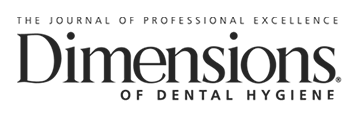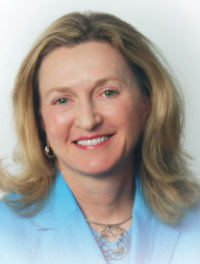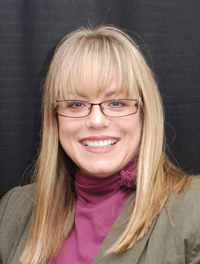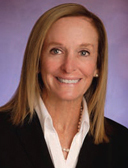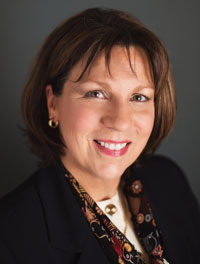
Stacy A. Matsuda, RDH, BS, MS, has been a private practitioner in specialty practice for more than 30 years and a clinical educator in periodontics for 18 years. She has trained dental and dental hygiene faculty and periodontal residents and practitioners across the United States and abroad. Twice honored as “Clinical Instructor of the Year” by her students at Oregon Health & Science University (OHSU) in Portland, Matsuda was a senior clinical instructor in the Department of Dental Hygiene and currently teaches periodontal residents at OHSU School of Dentistry. She recently completed a Master of Science degree in Management and Organizational Leadership. Matsuda is currently developing new curriculum in practice management and leadership for dental students and residents at OHSU School of Dentistry. She also serves as dental hygiene team lead for the Oregon Mission of Mercy in Portland.
A prolific writer, Matsuda is co-author of the third edition of Pattison and Pattison’s Periodontal Instrumentation: A Clinical Manual (in press) and the author of four chapters on periodontal instrumentation and dental implants in Wilkins’ Clinical Practice of the Dental Hygienist. She has also contributed numerous peer-reviewed articles to Dimensions of Dental Hygiene since the journal’s inception and is a Dimensions Editorial Advisory Board member.
Matsuda founded and directs the Pacific NW Institute, which provides education about eliminating self-defeating habits, streamlining efficiency, and improving patient outcomes to practicing clinicians through tailored, hands-on courses and clinical coaching. She is a fellow of the Association of Dental Implant Auxiliaries and a member of the Western Society of Periodontology and American Dental Hygienists’ Association.
What do you hope the future brings for the profession of dental hygiene?
I think that improving access to care is integral to the future of the profession. I am excited about the possibility of broadening dental hygiene practice acts to allow greater access to care for those Americans who are currently underserved. Creating different levels of dental hygiene practice based on varying educational and training requirements will also help address the access-to-care issue. New dental hygiene models, such as the periotherapist and advanced therapist, will allow for more independent ways of practicing within a collaborative wellness team of health care professionals.
I think we are building momentum for evidence-based practice. I am excited about the advanced degrees that dental hygienists are pursuing, as well as the varied roles, practice environments, and career options that are continually growing. I am inspired by the number of dental hygienists serving in leadership positions in dental education, and the great interest our profession has in collaborating across disciplines. Students who are serious about their studies, excited by scientific discovery, and who want to make a difference in their communities through professional involvement are the key to our future. I commend those dental hygienists who are engaged in supporting and developing our students because this is how we will ensure the longevity of our profession.
How have you honed your clinical instrumentation skills?
Periodontal instrumentation is arguably one of the most challenging skills to attain in dentistry—we are working against all odds. Even with an internal drive for excellence, it still takes years to perfect instrumentation skills. There are certain components to achieving this success, including a keen understanding of root morphology, clear application of instrumentation fundamentals, and refusal to use any instrument that is not optimally sharpened and contoured. Quality, selection, and sequence of hand instruments and power technology are also key elements of successful instrumentation.
Working in a periodontal practice all these years has enabled me to advance my skills as a therapist. Teaching senior dental hygiene students furthered my ability to translate concepts that cultivate advanced instrumentation skills in others. My practice also has a dental endoscope and I was part of the first group of trainers to teach periodontal endoscopy. Having visual confirmation of an immaculately-prepared root surface can speed the learning curve for clinicians who are motivated to achieve excellence in comprehensive root debridement.
What advice would you give to dental hygienists who are just beginning their career paths in an uncertain job market?
I would advise all new dental hygienists to embrace every opportunity to continue learning and to find a mentor. If jobs are scarce, ask an experienced dental hygienist in a periodontal specialty practice if you can shadow him or her during initial therapy. Observe the dental hygienist’s systems of practice, instrument choices, techniques, etc.
When expanding your educational horizons, it is paramount that you become a discerning consumer of quality continuing education. Consider the clinical practice experience of all authors, instructors, or mentors. If the topic is periodontal therapy, determine if the expert routinely performs definitive quadrant scaling and root planing under anesthesia. Does his or her information carry scientific validity with references from respected sources, or is it based primarily on personal experience? Look for evidence-based educators with a passion for excellence in clinical practice who have the practical experience to back it up.
Finally, serve your profession by getting involved in leadership and community outreach. You’re likely to find that giving generously from your heart brings many unexpected and deeply satisfying rewards.
What is your greatest passion, professionally?
Without a doubt, my greatest love is teaching. I am passionate about helping clinicians advance their skills through a newfound understanding of the many conceptual obscurities of instrumentation—either through written articles or hands-on courses. Too often, we develop self-defeating habits that doom the therapy we so desire to succeed. Many of these habits were acquired early, as students, and may become ingrained despite the fact that they are inefficient, ineffective, and injurious to musculoskeletal health. A simple shift in awareness is sometimes all that is needed to make a profound change. There is no finer moment than knowing I was able to translate a concept that supports a clinician’s ability to deliver definitive and successful nonsurgical care.
What inspired you to return to school to earn a Master of Science degree in Management and Organizational Leadership?
Returning to graduate school has long been a goal, but I wanted to pursue new directions of personal development, rather than simply reinforce what I was already doing as an educator. I have always been drawn to analytical problem-solving using approaches like systems thinking, and this master’s degree program did a magnificent job of expanding on these tools. An added bonus was finding a residency program in my home city because I relish the personal interaction I have with professors and a cohort. My research focused on organizational culture—a topic that has universal application to the clinical practice and education of dentists and dental hygienists in their development as health care professionals.
